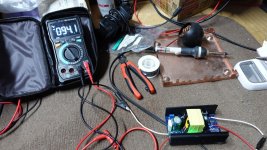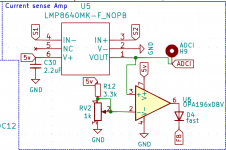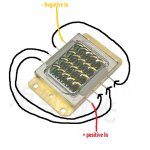BrilliantLasers
Active member
- Joined
- Apr 11, 2019
- Messages
- 122
- Points
- 28
It does have current regulation. There are 2 dials, one for voltage, and the other for current. I wouldn't have used it otherwise.. I have had power sources hooked up to it that can deliver in the hundreds of amps. Also, after conversion I have been able to hold 84 volts 3.3 amps at peak on that laser, which is past it's rating(Also around what Styro was running his at).. Which should mean it should be going past 95 watts. However I turned the current down a bit cause the batteries were getting pretty hot.You are getting away with a voltage regulator dc-dc converter because it and your cells can't output enough to hurt the array, you need a current regulator and more battery if you want to get max overdriven output or even the full 95w output, you are likely drawing 9-10a from your cells as they sag under load and your array is likely doing 75w max when it could do 95w rated and 110-125w overdriven if you can keep it cool, but 75w isn't bad if you can hold that 250w output as the cells discharge.
And what did you mean about the converter not being strong enough? It can handle WAY past the rating the laser can take. Did you even look at it?
Last edited:






